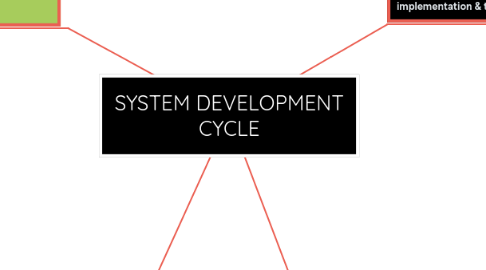
1. AGILE DEVELOPMENT An incremental and iterative process that uses iteration or sprints, with project team stopping and reevaluating the direction of the project every two weeks.
1.1. ADVANTAGES
1.1.1. There’s a big community of agile practitioners with whom you can share knowledge
1.1.2. You waste less resources because you always work on up-to-date tasks
1.1.3. You can experiment and test ideas because it costs are low
1.1.4. You can detect and fix issues and defects faster
1.2. DISADVANTAGES
1.2.1. Agile demands more time and energy from everyone because developers and customers must constantly interact with each other
1.2.2. Projects can become ever-lasting because there’s no clear end
1.2.3. Need a long term vision for the product and actively work on communicating it
1.2.4. Short cycles don’t leave enough time for the design thinking process so designers have to redevelop the experience over and over due to negative feedback
2. RAPID APPLICATION DEVELOPMENT [RAD] Iterative process that uses prototyping and user testing of the design. once prototypes is approved real software is written.
2.1. ADVANTAGES
2.1.1. Due to prototyping in nature, there is a possibility of lesser defects
2.1.2. Each phase in RAD delivers highest priority functionality to client
2.1.3. Flexible and adaptable to changes
2.1.4. With less people, productivity can be increased in short time
2.2. DISADVANTAGES
2.2.1. It can't be used for smaller projects
2.2.2. Not all application is compatible with RAD
2.2.3. Requires highly skilled designers or developers
2.2.4. Progress and problems accustomed are hard to track as such there is no documentation to demonstrate what has been done
3. SYSTEM DEVELOPMENT LIFE CYCLE [SDLC] Consist of five phases planning, analysis, design, implementation & testing and maintenance
3.1. ADVANTAGES
3.1.1. Monitor large projects
3.1.2. Well defined user input
3.1.3. Development and design standards
3.1.4. Evaluate costs and completion targets
3.1.5. Detailed steps
3.2. DISADVANTAGES
3.2.1. Increased development time
3.2.2. Systems must be defined up front
3.2.3. Hard to estimate costs, project overruns
3.2.4. Automation of documentation and standards is limited
4. JOINT APPLICATION DESIGN [JAD] Collaborative system developent with end user being part of the whole process through a series of JAD sessions
4.1. ADVANTAGES
4.1.1. Resolve difficulties more simply and produce better, error-free software
4.1.2. Accelerated design technique, easy to implement in any organization
4.1.3. Decreases time and costs associated with requirements elicitation process
4.1.4. Due to the close communication, progress is faster
4.2. DISADVANTAGES
4.2.1. Proper preparation is needed before JAD sessions without it valuable time will be wasted
4.2.2. Different opinions within the team make it difficult to align goals and maintain focus
4.2.3. Depending on the size of the project, JAD may require a significant time commitment
